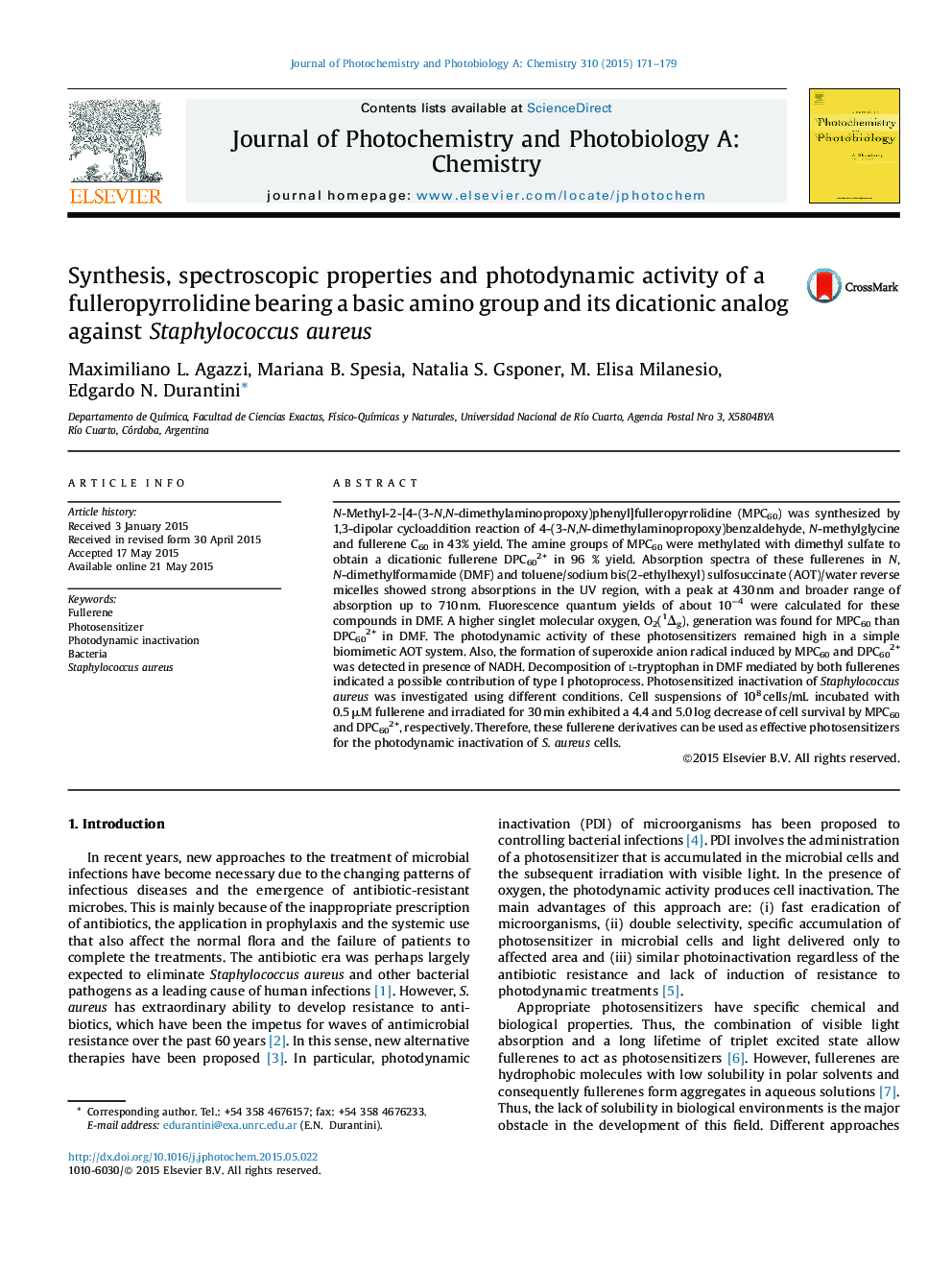| Article ID | Journal | Published Year | Pages | File Type |
|---|---|---|---|---|
| 26600 | Journal of Photochemistry and Photobiology A: Chemistry | 2015 | 9 Pages |
•A novel fulleropyrrolidine derivative was synthesized by 1,3-dipolar cycloaddition.•A dicationic fulleropyrrolidinium was obtained by exhaustive methylation.•Fullerene derivatives produce efficiently singlet molecular oxygen.•Fullerenes photosensitize the formation of superoxide anion radical in presence of NADH.•A high photoinactivation of Staphylococcus aureus was found for the dicationic fullerene.
N-Methyl-2-[4-(3-N,N-dimethylaminopropoxy)phenyl]fulleropyrrolidine (MPC60) was synthesized by 1,3-dipolar cycloaddition reaction of 4-(3-N,N-dimethylaminopropoxy)benzaldehyde, N-methylglycine and fullerene C60 in 43% yield. The amine groups of MPC60 were methylated with dimethyl sulfate to obtain a dicationic fullerene DPC602+ in 96 % yield. Absorption spectra of these fullerenes in N,N-dimethylformamide (DMF) and toluene/sodium bis(2-ethylhexyl) sulfosuccinate (AOT)/water reverse micelles showed strong absorptions in the UV region, with a peak at 430 nm and broader range of absorption up to 710 nm. Fluorescence quantum yields of about 10−4 were calculated for these compounds in DMF. A higher singlet molecular oxygen, O2(1Δg), generation was found for MPC60 than DPC602+ in DMF. The photodynamic activity of these photosensitizers remained high in a simple biomimetic AOT system. Also, the formation of superoxide anion radical induced by MPC60 and DPC602+ was detected in presence of NADH. Decomposition of l-tryptophan in DMF mediated by both fullerenes indicated a possible contribution of type I photoprocess. Photosensitized inactivation of Staphylococcus aureus was investigated using different conditions. Cell suspensions of 108 cells/mL incubated with 0.5 μM fullerene and irradiated for 30 min exhibited a 4.4 and 5.0 log decrease of cell survival by MPC60 and DPC602+, respectively. Therefore, these fullerene derivatives can be used as effective photosensitizers for the photodynamic inactivation of S. aureus cells.
Graphical abstractFigure optionsDownload full-size imageDownload as PowerPoint slide
